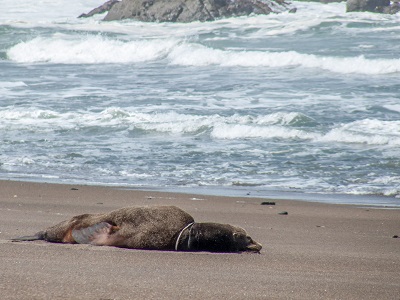
LITTERBASE currently comprises 1,956 scientific publications on interactions of organisms with litter. Interaction refers to encounters between wildlife and litter items. Ingestion was the most frequently observed interaction, followed by entanglement, which affects motility, often with fatal consequences. In addition, many species can settle on floating litter. If floating litter is carried over long distances by ocean currents, associated rafters can invade new areas. Until now, interactions were reported for 4,076 species of microbes, plants and animals. This figure is continuously updated and all reports are plotted in a global distribution map. While the database also contains records of interactions with wildlife from watercourses and land, the main focus of LITTERBASE is on the marine realm. The records can be filtered according to interaction type, aquatic system (marine, freshwater, estuarine) and marine realm (beach, sea surface, water column, seafloor), as well as being shown separately. The map shows that a fair number of interactions was recorded from the Atlantic, Mediterranean and North Pacific. By contrast, only few encounters were reported from other regions, for example, from the Indian Ocean and Polar Regions.

Further information about the groups of organisms affected by litter can be gleaned from info graphs. Inhabitants of all parts of the marine realm interact with litter from the seafloor, to the water column, sea surface and beach. Most encounters were reported for sea birds and fish. Organisms interact mostly with larger litter items, but more and more reports on encounters with microplastics emerge. Most of the litter items encountered are made of plastic and often they originate from fisheries.
All info graphs can be downloaded (source: LITTERBASE/AWI).
Keywords
Marine litter, marine debris, microplastic, ingestion, entanglement, colonisation, rafting, GIS, WebGIS
Citation
Tekman, M.B., Gutow, L., Macario, A., Haas, A., Walter, A., Bergmann, M.: Alfred-Wegener-Institut Helmholtz-Zentrum für Polar- und Meeresforschung